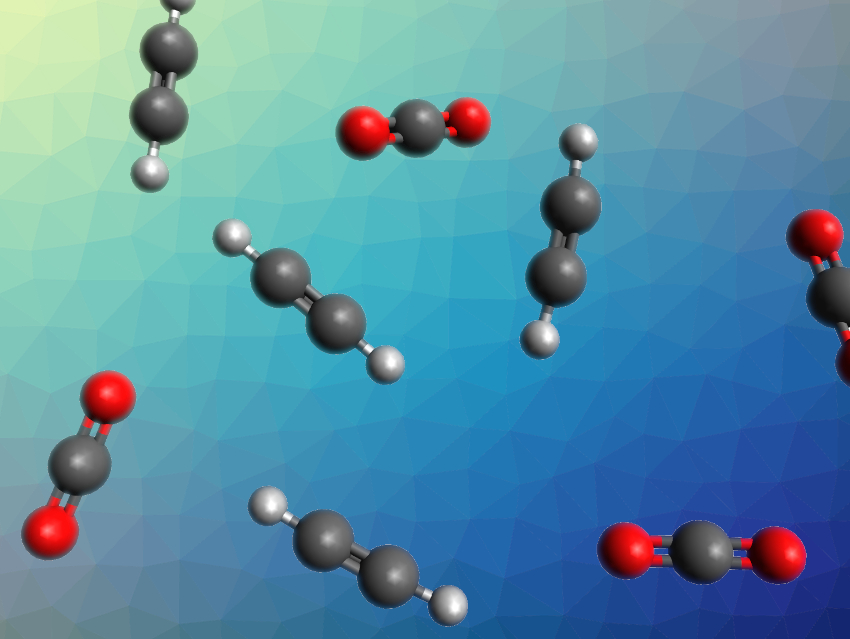Metal–organic frameworks (MOFs) are composed of metal centers and organic linkers. Generally, MOFs are crystalline, porous materials. They are useful, e.g., in catalysis or gas separation. Acetylene (C2H2), for example, is a commonly used chemical feedstock. CO2 often is a byproduct of acetylene production, thus, efficient separation processes for C2H2/CO2 mixtures would be useful.
Yong Cui, Shanghai Jiao Tong University, China, Banglin Chen, University of Texas at San Antonio, USA, and colleagues have prepared two isostructural, chiral, nickel-based MOFs designed for efficient acetylene uptake and C2H2/CO2 separation, i.e., Ni2(L-asp)2(bpy), or “MOF-NH2“, and Ni2(L-mal)2(bpy), or “MOF-OH”. These MOFs were synthesized from either L-aspartic acid and nickel carbonate or L-malic acid and nickel acetate, respectively, which were combined with 4,4′-bipyridyl (bpy) in solvothermal reactions. The researchers point out that the MOFs are prepared from inexpensive compounds and the reaction is scalable up to kilograms.
The synthesized frameworks both form one-dimensional channels. The team investigated the adsorption behavior of MOF-NH2 and MOF-OH and found that acetylene is preferentially adsorbed in the MOFs’ channels over carbon dioxide in both cases. MOF-OH, in particular, showed the highest acetylene storage density to date (0.81 g mL–1 at ambient conditions) and is stable in air and in water. Thus, the material could be useful for selective C2H2 adsorption and purification.
- Efficient C2H2/CO2 Separation in Ultramicroporous Metal–Organic Frameworks with Record C2H2 Storage Density,
Wei Gong, Hui Cui, Yi Xie, Yingguo Li, Xianhui Tang, Yan Liu, Yong Cui, Banglin Chen,
J. Am. Chem. Soc. 2021.
https://doi.org/10.1021/jacs.1c07191



